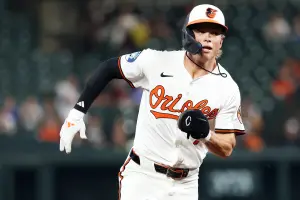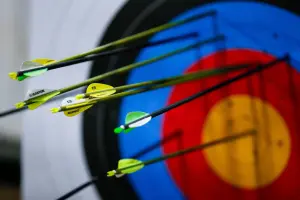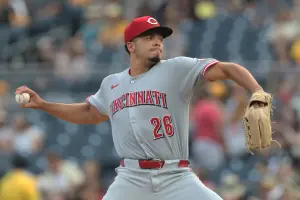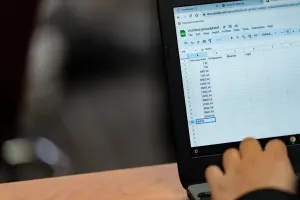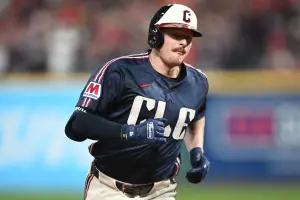
(*) ROTISSERIE: Ruminations on risk and a reduced schedule
This article appeared in the April 22 edition of Sports Weekly.
As the reality of a shortened season was setting in a little over a month ago, FanGraphs columnist Alex Chamberlain posted a tantalizing Twitter poll. Paraphrasing, he asked whether a shortened season made injury-prone players, like Giancarlo Stanton, more or less valuable.
The results surprised Chamberlain – and this writer as well. About three-quarters of the 400-plus voters said “more valuable.”
To some degree, the “let it ride” mentality is understandable. With the player’s health history bringing down his acquisition price, a tantalizing profit awaits, if only the player can elude injury. That may seem more doable over a shorter sprint of a season.
And to be sure, the math is anything but clean. Two things can be true at once: A shorter season gives these oft-wounded players less opportunity to get hurt and their 10- or 15-day stay on the injured list will hurt more, eating up a larger chunk of the season.
Nonetheless, what we know about habitually injured players argues pretty strongly in favor of ratcheting up our risk aversion in advance of a shortened season.
In the Baseball Forecaster, one “health homily” preached to readers each year is, Chronically injured players never suddenly get healthy.” Research conducted by Bill Macey, also recounted annually in the Forecaster, has shown just how prevalent injuries in back-to-back seasons tend to be.
Players injured in one year had about a 40 percent chance of returning to the injured list in the subsequent year, with rates slightly higher for pitchers.
At least with hitters, there seemed to be some predictable correlation with age, Macey also noted: Players under 30 repeated IL stints at a 36-percent clip, while that rate rose to 41 percent for players over 30.
While the data failed to show the same correlation with pitchers, that may just speak to the relatively taxing nature of what pitchers do, especially on certain body parts (shoulders, elbow ligaments). In other words, pitching is dicey business, no matter your age.
But for our current purposes, Macey’s other finding — that previously injured players tend to spend a longer time on the IL the second time around — may even be more crucial. In other words, whatever missed time you are mentally baking into your assessment of an oft-injured player, you may be shooting too low.
Couple that insight with a shorter overall season, and it points to the conclusion that you should probably let others assume the risk of rostering these players as a general rule.
But of course, rules were made to be broken. Since winning at fantasy baseball is more about risk management than outright risk avoidance, some selective aggressiveness may be advisable with some of these oft-injured players.
What should you consider when making such a bet?
We’ve already mentioned age — you should lean more towards taking a shot on younger injured players than older ones — and the fact that hitters may be slightly less prone to “encore” injuries than pitchers.
Add to these considerations the nature of the injuries in question — be particularly wary of balky elbows and shoulders, for example — and then also factor in the acquisition cost and the size of your league, which will determine how replaceable a player is, if injuries indeed strike again.
How would these principles look in practice?
At the more expensive end of the scale, you should be comfortable with the fact that someone may well be willing to pay more a player than you should be.
Stanton is one poster boy for this phenomenon. Almost certainly, once the start of the season begins to approach, a wave of optimism will build around Stanton — the only question may be how high it may crest. Some may even derive some false sense of security from the fact that he got this year’s injury “over with” early.
But while it’s true that Stanton was closing in on a return to the field from a calf injury when spring training play was halted, consider alongside his lengthy injury history the fact that he is now on the wrong side of 30.
Now consider that there are other players available at around the same cost who can provide similar production without the risk. These include Twins DH Nelson Cruz, who recently posted a video to Instagram of his workout regimen back in the Dominican Republic, offering a little extra reassurance he will be ready to answer the bell, whenever it comes.
In a similar vein, when we last heard from Rays SP Blake Snell, he was downplaying concerns about his elbow discomfort, which was treated with a cortisone shot at the end of February — after being scoped last July.
That is all well and good, but there are far more reliable pitchers in a similar average-draft-position range. These include still-ascendant Reds SP Luis Castillo and warhorse Astros SP Zack Greinke, who has displayed top-notch skills in 200-plus IP in five of the last six seasons.
The better risks are players who are virtually free, and thus more easily replaced. For example, at last check, Pirates OF Gregory Polanco’s ADP was around 294 — Round 20 in a 15-team league. While the nature of his most recent injury woes (shoulder) give us pause, he looked pretty healthy during Spring Training (8-fo-21, HR, 3 2B).
Available even later (ADP: 366) is Mets OF Brandon Nimmo, another under-30 outfielder who spent the spring demonstrating that his injury issue, in his case a bulging disc in his neck, may be behind him (11-for-29, 3 2B).
In deeper leagues, there are players who are essentially lottery tickets, easily disposed of, if they do not work out.
These include players whose power has never been in doubt, even as they have amassed legendary medical charts, like Rangers 1B Greg Bird (ADP: 703) and Nimmo’s teammate Yoenis Céspedes (ADP: 466).
Cespedes may even get to benefit from the emergency implementation of a universal designated hitter, as had reportedly been mulled as part of realigned play hosted at Grapefruit and/or Cactus league sites.
Another player to consider taking a chance on would be Giants 2B Wilmer Flores (ADP: 647), who may find playing time easier to come by in San Francisco than his previous MLB stops.
Finally, a couple of oft-injured pitchers to consider throwing a buck or two late in drafts would be Blue Jays SP Matthew Shoemaker (ADP: 450) and Red Sox SP Nathan Eovaldi (ADP: 372), neither of whom yielded a run in admittedly small spring samples – Shoemaker, 6.2 IP, 1 H, 1 BB, 9 K; Eovaldi, 8 IP, 4 H, 1 BB, 12 K.


